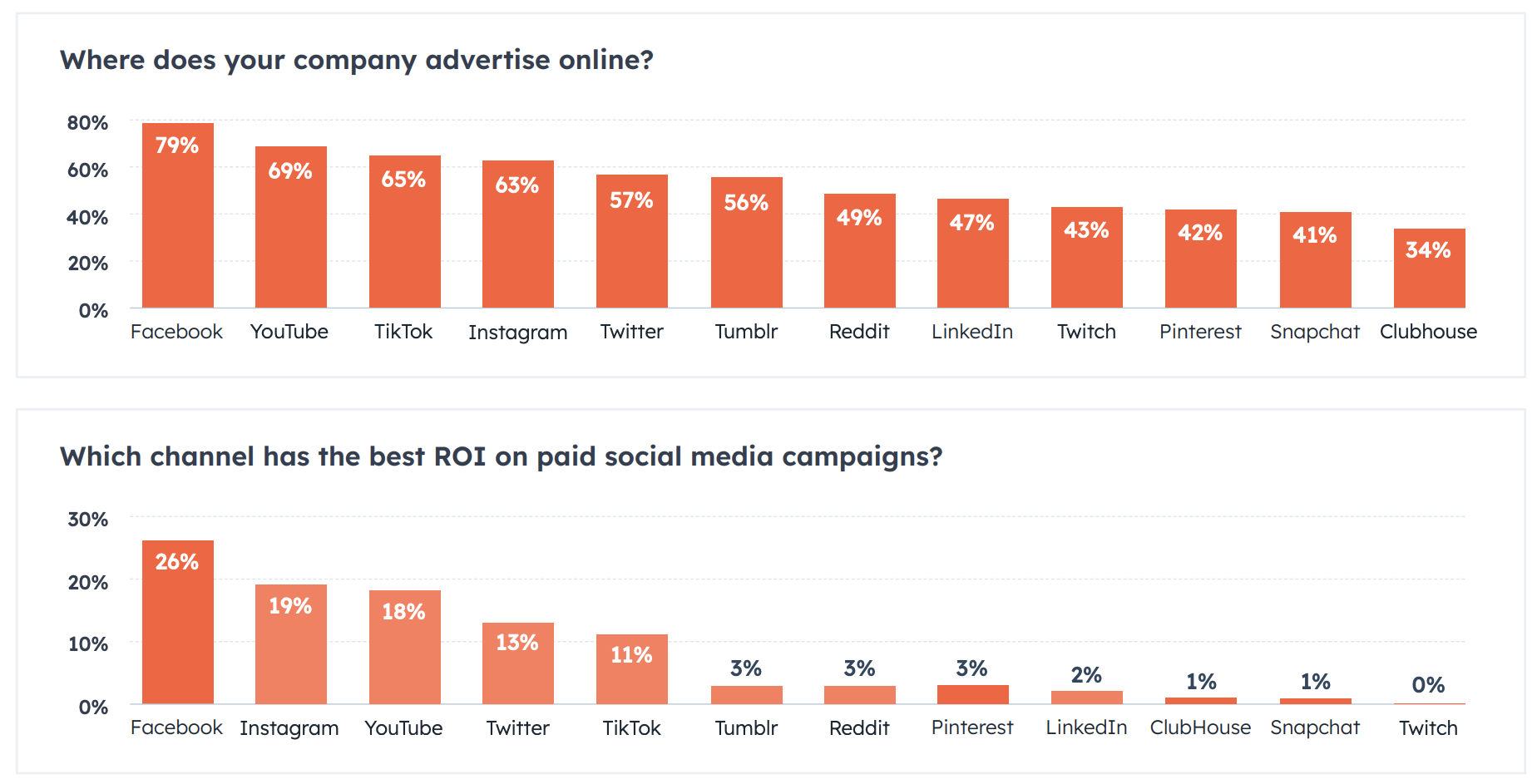Measuring marketing effectiveness isn’t easy. There are dozens of metrics available, but most of them offer very specific insights into your success at campaign or even individual ad level. This can help you test and improve your ads, but it won’t give you an overall picture of what you’ve actually achieved.
That’s where marketing efficiency ratio (MER) comes in. MER is a simple formula that gives you a high-level view of what you’ve spent and what you’ve earned in revenue. Not only that, you can also monitor MER independently, without relying on incomplete or dubious data from external platforms.
So what is the marketing efficiency ratio, and how can you use it effectively in your business?
Over the next 5 minutes or so, expect to learn:
- How to calculate MER
- Why you should be using MER
- Why MER is an increasingly important metric going forward
- Potential situations where you shouldn’t use MER
- How to use the metric to boost marketing efficiency and profitability
- MER use cases & best practices
What Is Marketing Efficiency Ratio (MER)?
The marketing efficiency ratio is a calculation of how much you’ve spent on paid media in total, and how much revenue you’ve generated as a result. This gives you a clear overall view of your return on investment.
MER is the same as eROAS in the 3 ROAS to Rule Them All. In short, it’s how effective your paid media is overall.
It allows you to answer one of the most important questions in marketing: How many revenue dollars are being generated for every dollar spent.
You should always aim for your MER to stay the same or improve gradually over time. If your MER starts to decrease, it can indicate wasted, lost, or misspent marketing budget.
As a performance marketer, you can see this initial indicator quickly, and then use other more specific PPC metrics (such as return on ad spend and cost-per-acquisition) to adjust and optimise your campaigns.
MER is simple and quick to calculate. There’s no need to use attribution models or separate your ad spend into channels; just track your total paid media spend and your total sales across all paid channels, then apply the formula below.
How to Calculate MER
Calculate your marketing efficiency ratio by using this formula:
Total revenue from paid media ÷ total paid media spend = marketing efficiency ratio
Here’s an example:
Your total spend on paid media is £2,500. From this, you’ve generated £10,000 in revenue. Applying the MER formula (£10,000 ÷ £2,500) shows that your MER is 4, or 4x spend.
MER is usually expressed as a number, or a number followed by an x (i.e. 3x spend). It can also be shown as a percentage, though this is less common. In the example above, the percentage MER would be 400%.
MER also shows if you’re running at a loss. If your total ad spend is £2,500 and revenue is just £2,000, your MER will be 0.8. That means 20% of your ad spend hasn’t been recovered in revenue.
An MER less than 1 represents a loss, so in most cases businesses aim to avoid this. But in some circumstances, you may accept a negative MER in the short term to see greater gains in the long run.
For example, a brand may spend a lot on display ad campaigns to raise awareness of a new flagship product after its launch. As these campaigns generally have lower conversion rates, it may push down the marketing efficiency ratio. But these losses may be recuperated in the following months through direct sales of the product via paid search and social.
Most businesses don’t deal with round figures like these. But as long as you track your spend and revenue, you can work out your MER. If you spend £4,489.47 on paid channels and generate £23,662.98, your MER will be 5.27x.
You don’t need to rely on external figures, estimated conversion rates, or complicated formulas to work out your marketing efficiency.
Why Marketing Efficiency Is More Important Than Ever
The rise of social media marketing means there are now more advertising channels than ever before. In 2022, 80% of brands use paid social media advertising. Here are the most popular paid social channels, and their respective returns on investment:
Advertising across multiple channels can be extremely effective. But it can also take a lot of time to track, measure, and optimise ads across several channels. Using MER, you can make sure your paid media marketing gets results, without delving deep into the metrics of each platform individually. This is especially useful as automated campaign types like Performance Max begin to restrict the data available to marketers.
The host of Honest eCommerce, Chase Clymer, believes MER is superior to ROAS as a measurement of marketing performance:
The cool thing about marketing efficiency ratio is that you aren’t relying on the returns the platform tells you. All you’re looking at is the inputs […] which is, for example, the $45,000 that you spent. And you made $270,000 dollars this month – so you can start to plot those data points within your reporting.
And it’s not just marketers themselves who can make use of the MER metric. Marketers must be able to prove that they’re getting the most from their allocated budget. MER is a high-level metric that gives C-suite executives and investors a true picture of overall performance.
What Are the Main Benefits of MER?
Here are some of the key advantages of using MER to determine marketing effectiveness.
- There’s no need to rely on external platform data – As third party data becomes less accessible, advertising platform data will become more unreliable and speculative. Using your own data to measure performance gives a more reliable and trustworthy indication of your success.
- See the impact of all your paid media channels as a single entity – Multiple channels often work together to convert customers. MER gives you a holistic overview, so there’s less need to attribute success to one specific platform. Some platforms are better for generating awareness and others are better at driving conversions, MER accounts for these differences.
- Get more from your marketing budget – Tracking MER changes from month-to-month helps you see if your strategy is still the most efficient way of working. If it begins to drop it’s a strong indicator further investigation is needed to establish where money is being spent efficiently.
- MER is indispensable for small businesses – Not all business owners have time to calculate specific metrics and analyse how they feed into broader marketing operations. MER is a single, easy-to-calculate formula that can be tracked over time to help smaller businesses optimise their marketing operations.
When Should You Use MER?
Other metrics (like ROAS) still have their place in a paid media strategy. But to avoid wasting time (and thus your operational efficiency), knowing when to use each metric is key.
ROAS is often used to find out the individual performance of each channel, but it won’t always give you a true picture. Multiple channels can contribute to customer acquisition, and ROAS doesn’t account for this.
Let’s say you use Facebook ads, Instagram ads, and Reddit ads to sell your product. Here’s how your ROAS looks after a six-month campaign:
| Channel | Ad spend | Revenue | ROAS |
| £1,000 | £10,000 | 10 | |
| £1,000 | £5,000 | 5 | |
| £1,000 | 0 | 0 | |
| Total (MER) | £3,000 | £15,000 | 5 |
Your MER – 5x – tells you this is a successful strategy. But based on your ROAS, you decide to cut Reddit from your paid media strategy, since it’s not making you any money directly.
You relaunch the campaign without Reddit. Another six months later, here are the results:
| Channel | Ad spend | Revenue | ROAS |
| £1,000 | £5,000 | 5 | |
| £1,000 | £2,000 | 2 | |
| Total (MER) | £2,000 | £7,000 | 3.5 |
You’ve spent £1,000 less, but your revenue has dropped, and your MER is now just 3.5x. So you’re getting less for the amount you spend.
It turns out that Reddit was boosting brand awareness, indirectly increasing conversions over on Facebook and Instagram. These conversions hadn’t been accounted for when calculating your ROAS.
MER helps you stay focused on the bigger picture, so you can avoid mishaps like this and squeeze as much revenue as possible from your ad budget.
What Are the Downsides of Using MER?
Whilst we’re very pro-MER, we won’t pretend it’s perfect for every scenario. The main disadvantage of using MER is that there’s nothing to benchmark against, at least not for the first few months. There’s no such thing as a universally “good” MER; it differs depending on several factors, including:
- Business size
- Industry
- Marketing strategy
- Profitability goals
Some marketers suggest 3x MER is a good start. But it’s all relative. A high MER doesn’t always translate to high profitability.
A business that spends £100 and generates £500 in revenue has the same MER (5x) as a business that spends £1 million and generates £5 million. So benchmarking for success can be tricky, at least until you have a few recorded months of performance data under your belt.
You may be in a position to go back and retroactively calculate your MER for the previous 6 months. If so, you’ll be able to compare that data to the following 6 months to identify any trends.
How to Fit MER Into Your Business Goals
The marketing efficiency ratio can help you maximise efficiency or profitability. Most businesses must choose one or the other to focus on in their marketing efforts.
The option you choose depends on your business priorities: which is more important, reducing spend or generating revenue? Generally speaking, those seeking growth want to maximise profitability, while those with lower budgets aim to maximise efficiency.
To make MER work for your business, you’ll need a few projected figures:
- Total sales projections
- Expected gross margin (difference between sales & cost of goods sold)
- Marketing budget
- Profitability margin goal (difference between gross margin & marketing budget)
Using MER to Maximise Profitability (Example)
Let’s say you run an early stage tech startup. You’re seeking exponential growth this year, so everything is geared towards maximising profits. Here’s what you’re hoping to achieve:
- Sales projections: £10m
- Expected gross margin (%): £6m (60%)
- Marketing budget: £3m
- Profitability margin goal: £3m
With total ad spend of £3m and projected sales of £10m, you can expect an MER of 3.33. But if you’re maximising profitability, you may be happy to spend more on marketing (say, £4m) if it increases sales to £12m. This will reduce your MER slightly to 3, but will boost your profitability margin by £1m:
- Sales projections: £12m
- Expected gross margin (%): £8m (60%)
- Marketing budget: £4m
- Profitability margin goal: £4m.
Using MER to Maximise Efficiency (Example)
Not all businesses have wide enough profit margins to put more money into their marketing budget. Here’s an example yearly projection for a fictional car dealership, which has the same sales target but lower gross and profitability margins:
- Sales projections: £10m
- Expected gross margin (%): £2m (20%)
- Marketing budget: £1m
- Profitability margin goal: £1m
The MER for this company is 10x. But smaller profit margins mean companies must be much stricter with their budgets, and ensure all their paid media campaigns are optimised to ensure every pound spent generates a substantial return.
Best Practices For Using MER
Ultimately, MER helps you get the most from the money you spend, whether you’re trying to boost revenue or keep costs down. Here are four ways to optimise your marketing efficiency ratio.
- Collect first party data – Ad platforms are reducing the amount of third-party data they share with advertisers, making PPC campaigns less efficient. Collect your own first party data to optimise conversions at every stage of the marketing funnel, improving your MER.
- Set the right goal – Decide whether profits or efficiency are more important from the start. Avoid moving the goalposts halfway through a campaign, as this can change where and how you use your marketing spend, resulting in wasted ad budgets.
- Compare MER month-on-month – Check your marketing strategy is having the right overall impact by comparing low-spend months with high-spend months. If your MER is roughly the same for each, your strategy is probably giving you a good return.
- Assign budgets based on historical MER – Instead of allocating budget based on ROAS, use MER to guide your overall spending decisions. This will help you make smart revenue-based choices, rather than basing them on more granular metrics.
Boost Performance Marketing Efficiency with Lunio
Optimising marketing efficiency isn’t just about where you spend your advertising money. You can get near-instant cost savings by eliminating bots, fake touchpoints, and invalid users from your paid campaigns. This traffic never converts, making it effectively worthless.
Lunio helps you get more from your budget by removing these interactions, so you’re only ever spending to reach real users with genuine conversion potential. This in turn increases your marketing efficiency ratio because you’ll be driving more conversions and sales with the exact same ad spend.
Our 2021 Global Click Fraud Report revealed that most businesses waste up to 20% of their ad budget every month on fake touchpoints and traffic. Currently, most businesses spend far too much on traffic acquisition and not nearly enough on revenue acquisition.
Lunio eliminates all wasted spend and lifts the quality of your paid traffic to help you break through revenue plateaus and make faster progress towards your goals.
Want to see it in action? Learn how much you could save with a free audit and trial.
Boost Efficiency
Try our 14-day trial to reach genuine users and supercharge your marketing efficiency ratio.








